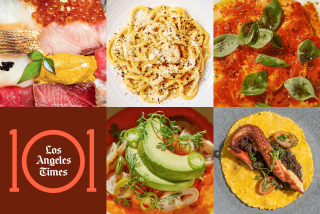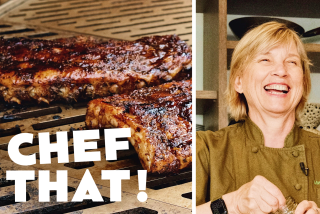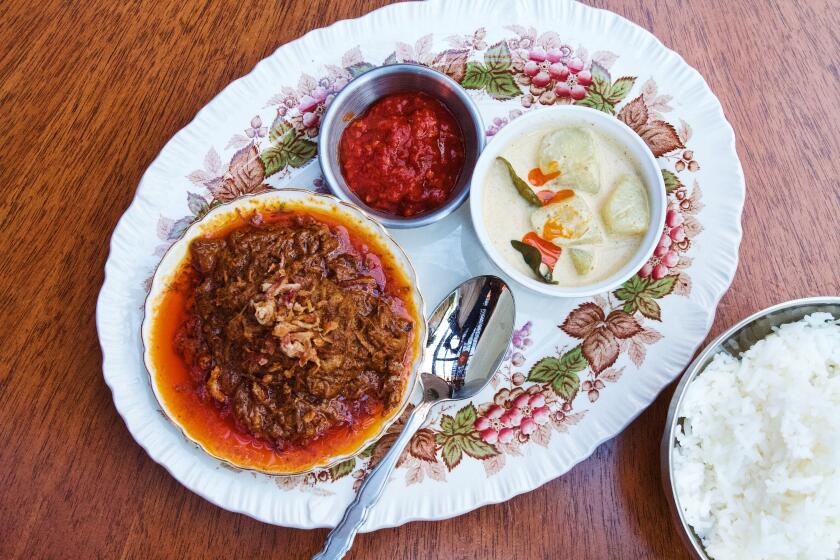A Short History of Dietary Habits of U.S. Presidents
This is a story about politics and pork rinds. Government and grapes. The history of the U.S. presidency bulges with interesting tales about the food that fueled our country’s chief executives.
If you thought that nutrition was the brainchild of the 1980s, you’ll be surprised to learn that President James Garfield popularized the term more than 100 years ago. Somebody had to do it. The two previous Administrations served almost as many courses at state dinners as there were stars on the flag. A typical menu wallowed in thick sauces, rich desserts and enough foreign words to open a language school.
When Garfield took office, he insisted on simple, wholesome food. Guests sat down to such basic, no-nonsense fare as “Mrs. Garfield’s White Loaf Bread” and “Extra-Fluffy Mashed Potatoes.” Garfield’s tenure lasted only a few months; given a chance, he might have started the oat bran fad early.
Our country has a long, if misguided, tradition of equating rich dishes with elegant dining. It is probably not any President’s fault that when we cook for company, we add whipping cream to everything but the roast. Still, some popular notions about entertaining date back to a time when the White House led the social scene.
Presidential styles vary, but a heavy entertaining schedule seems to come with the territory. When George Washington was President, he held a reception every Tuesday, a congressional dinner each Thursday and frequent state banquets. On Friday nights, his wife, Martha, took over the drawing room for yet another gathering. Refreshments or meals were served at all these events.
Away from the demands of their public host role, our Presidents have been individuals with diverse palates and a varying commitment to good health. Some rode horses or took brisk walks each morning. Others exercised most vigorously with a knife and fork.
Like many people of their time, William and Ida McKinley believed in getting the day off to a substantial start. Large portions of eggs, hot breads, potatoes, steak or chops, fish, fruit and coffee were standard morning fare. In “The Presidents’ Cookbook,” researchers Poppy Cannon and Patricia Brooks say lunch and dinner at the McKinleys ran the rather short gamut from abundant to Gargantuan.
William Howard Taft weighed 332 pounds at his inauguration. Between enormous meals, he nibbled salted almonds. Under doctor’s orders to reduce his daily breakfast steak from 12 ounces to eight, Taft complied . . . when his wife was there to watch him.
Of course, then as now, diet was just one part of a President’s life style.
“It’s difficult to compare other ages,” said Dr. John LaRosa, dean of clinical affairs at George Washington University’s Medical School. “People lived differently. They walked more, and fewer people in the upper classes smoked cigarettes. The impact of a high-cholesterol diet may have been different.” In fact, the rate of heart disease was actually lower, he says.
Not since Thomas Jefferson introduced waffles and ice cream has any President intentionally raised eating to the level of a real issue. However, historians have retained enough tidbits about presidential diet to rate a separate category on “Jeopardy.” Would-be contestants interested in boning up are referred to “The Presidents’ Cookbook” and “The First Ladies Cook Book,” with historical text by Margaret Klapthor Brown.
For example:
Calvin Coolidge kept crackers and preserves at his elbow for a convenient snack.
James Buchanan liked grapes so much that he tended an arbor at the White House.
Zachary Taylor’s three favorite foods were fried oysters, stewed oysters and roasted oysters.
Ulysses S. Grant once said: “I refuse to eat anything that goes about on two legs.”
As executive chef for five recent presidents, Henry Haller found modern first families to be weight-conscious and open to nutritional advice. When interviewed for an article in Weight Watchers Magazine, Haller identified a dilemma many less-famous cooks will recognize: removing the sodium and fat from favorite dishes without making them taste like recipe cards.
Haller succeeded by seasoning with herbs instead of salt and substituting low-fat ingredients wherever possible. That meant using bouillon instead of cream in chipped beef for Lyndon Johnson, who topped his Western salad with low-calorie dressing when dining privately.
LBJ’s hearty Texas appetite got the better of him at times. The Johnsons’ family cook, Zephyr Wright, is said to have left a note under LBJ’s plate: “Eat what I put in front of you, and don’t ask for any more, and don’t complain.”
From Southern fried chicken for the Carters to light, California cuisine for the Reagans, menus reflected regional tastes during Haller’s 21 years on the job. The American palate expanded accordingly. When you think about presidential influence, consider how many more people now know that okra is something you can eat.
Even before there was scientific evidence to back him up, Jefferson attributed his long life to eating many vegetables and little animal fat. One person’s health doesn’t constitute proof, but studies of whole populations suggest that diet contributes to the clogged arteries that can lead to heart attacks. It turns out that this forefather knew best.
So how about those pork rinds, the twice-fried munchie that President Bush made famous?
“It’s OK to eat almost anything if the quantity doesn’t break the bank as far as total intake of fat and cholesterol goes,” LaRosa said. “You have to consider the total diet, not just one snack.”
More to Read
Eat your way across L.A.
Get our weekly Tasting Notes newsletter for reviews, news and more.
You may occasionally receive promotional content from the Los Angeles Times.










